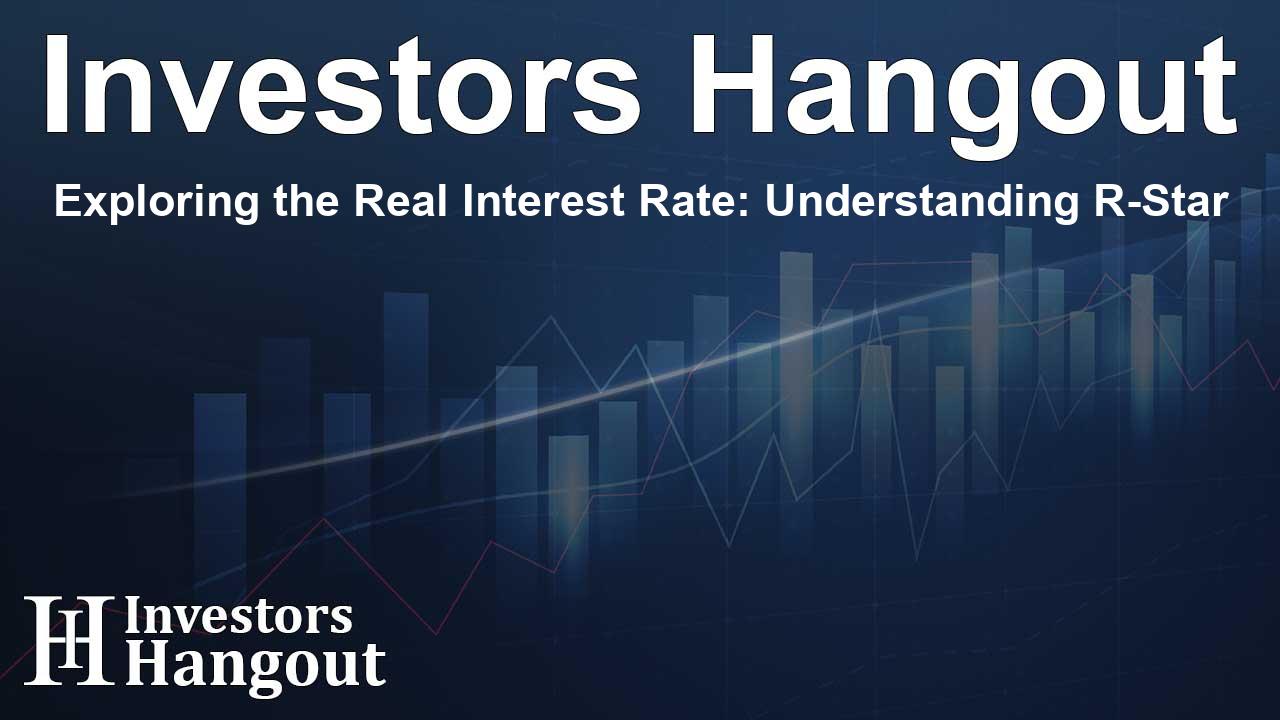Exploring the Real Interest Rate: Understanding R-Star

Understanding R-Star: The Real Neutral Interest Rate Explained
Macro 101 is all about R*, the real equilibrium interest rate that guides Central Banks in their interest rate decisions.
When Central Banks set interest rates, their primary goal is to achieve price stability. In some cases, they are also focused on maximizing employment, as seen in the Federal Reserve's approach.
Central Banks need to calibrate interest rates according to their interpretation of what is considered neutral. They may choose to raise rates above this level to cool down an overheating economy and manage rising price pressures. Conversely, they would reduce rates below this neutral position to stimulate growth when needed.
This brings us to the concept of R*, which refers to the estimated real interest rate where the economy maintains balance, avoiding overheating or cooling excessively.
Current estimates suggest that R* in the United States hovers around +1%. This implies that if core inflation aligns with the targeted rate, the nominal neutral interest rate would approximate 3%. However, with inflation consistently surpassing targets, the Federal Reserve has adopted a relatively restrictive stance, with Fed Funds currently at 4.25%, exceeding the neutral benchmark.
Calculating R*: Key Inputs for Central Banks
Central Banks consider several crucial factors when calculating R*:
1) Demographics
The size of the labor force plays a critical role. An expanding workforce suggests stronger potential growth, aligning with a higher equilibrium rate, while a shrinking labor pool indicates the opposite.
2) Productivity
Increased productivity in utilizing capital and labor can lead to an elevated equilibrium rate. More efficient use of resources often reflects a thriving economy.
3) Availability of Risk-Free Assets
The presence of ample risk-free assets contributes to higher equilibrium rates. A greater supply of such collateral enhances financial stability and investor confidence.
Recent insights from Fed minutes reveal that some members of the Federal Open Market Committee (FOMC) believe R* has increased due to ongoing fiscal deficits, which provide more supply of Treasury collateral. Additionally, advancements driven by artificial intelligence in productivity are also contributing factors to this rise.
This perception may lead to the conclusion that the current Fed rate of 4.25% is not as restrictive as it seems, with the neutral rate being perceived higher at around 3.50%.
The Implications of R* on Monetary Policy
Understanding R* is instrumental for investors and analysts alike as it serves as a crucial benchmark for assessing economic conditions. The Fed’s current monetary policy decisions will likely continue to consider these underlying factors.
The dynamics of R* provide a framework for evaluating whether current rates are appropriately set. If R* is on the rise, it suggests that the economy may have more room to expand without triggering inflationary pressures, thus paving the way for adjustments in interest rate strategies.
Being aware of R* can help stakeholders grasp the complexities of financial markets and economic forecasts. It simplifies discussions around monetary policy and illustrates how Central Banks can navigate economic challenges.
In conclusion, R* is not just a theoretical concept; it reflects the health of the economy and underpins the decisions that affect everyone, from governments and investors to everyday consumers.
Frequently Asked Questions
What is the significance of R* in monetary policy?
R* represents the real equilibrium interest rate that guides Central Banks in making interest rate decisions aimed at achieving price stability and supporting economic growth.
How is R* calculated?
Central Banks calculate R* based on several factors, including demographics, productivity, and the availability of risk-free assets.
Why is the Fed's current rate above the neutral level?
The Fed's rate is above neutral due to persistent inflation and decisions made to cool down the economy by controlling price pressures.
What factors contribute to changes in R*?
Factors such as labor force size, productivity advancements, and fiscal policies impacting the supply of risk-free assets contribute to fluctuations in R*.
How does R* affect economic forecasts?
R* helps assess whether current interest rates are appropriate, influencing economic forecasts and financial market strategies as it reflects underlying economic conditions.
About The Author
Contact Caleb Price privately here. Or send an email with ATTN: Caleb Price as the subject to contact@investorshangout.com.
About Investors Hangout
Investors Hangout is a leading online stock forum for financial discussion and learning, offering a wide range of free tools and resources. It draws in traders of all levels, who exchange market knowledge, investigate trading tactics, and keep an eye on industry developments in real time. Featuring financial articles, stock message boards, quotes, charts, company profiles, and live news updates. Through cooperative learning and a wealth of informational resources, it helps users from novices creating their first portfolios to experts honing their techniques. Join Investors Hangout today: https://investorshangout.com/
The content of this article is based on factual, publicly available information and does not represent legal, financial, or investment advice. Investors Hangout does not offer financial advice, and the author is not a licensed financial advisor. Consult a qualified advisor before making any financial or investment decisions based on this article. This article should not be considered advice to purchase, sell, or hold any securities or other investments. If any of the material provided here is inaccurate, please contact us for corrections.
